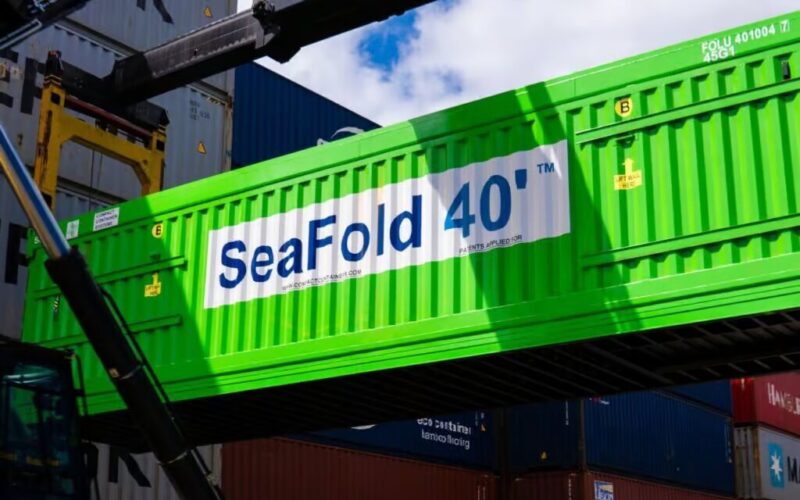Compact Container Systems (CCS) has shared findings on its foldable SeaFold 40’ container, which offers significant emissions reductions compared to traditional 40-foot high cube containers.
The SeaFold 40’ reportedly cuts GHG emissions by up to 70 per cent when transported by barge, 68 per cent by heavy goods vehicles (HGV), and 49 per cent by rail.
These results come from an independent study by ESG Base, a sustainability consultancy, which modelled carbon dioxide equivalent (CO2e) emissions across multiple transport modes, accounting for variables such as transport distance, vehicle mass, and fuel efficiency.
The release of this data comes as the European Union prepares to enforce Scope 3 emissions reporting in 2025. Under these new requirements, companies with annual revenues above €150 million ($158.97 million) must disclose their supply chain emissions, increasing pressure on logistics providers to adopt more sustainable practices.
Charlie Santos-Buch, Chairman and CEO of CCS, emphasised the potential impact of SeaFold 40’ at the Intermodal Europe exhibition in Rotterdam: “The SeaFold 40′ is going to have a dramatic impact on carbon emissions throughout the supply chain.”
“Our ‘green box’ can make a dramatic impact – five folded and stacked SeaFold 40’ containers can stand in the place of one conventional container – saving space and cutting relocation costs, GHG emissions, and turnaround times.”
READ: Non-compliance, Profitability, and Technology: All Things EU ETS
Santos-Buch further pointed to the EU’s higher HGV weight limits, which he believes give European operators a unique advantage in emissions reduction: “Although SeaFold 40’ benefit the global container industry, they should be of particular interest to EU HGV operators.
“With the potential to carry five folded SeaFold containers, operators could see a dramatic reduction in CO2e by up to 68 per cent.”








